Seymour Cray and his car
 Bashny.Net
Bashny.Net
September 28, 1925 in Chippeua Falls, Wisconsin, was born Seymour Roger Cray. This talented engineer and inventor, created some of the best computers of its time. Ever since his school years he was interested in radio engineering and chemistry. After graduation, in 1943, serving in the US Army radio operator, and is engaged in decoding Japanese messages. After serving in the army Seymour Cray enters the University of Minnesota, where in 1950 received a bachelor's degree in electrical engineering, and in 1951 a master's in applied mathematics.
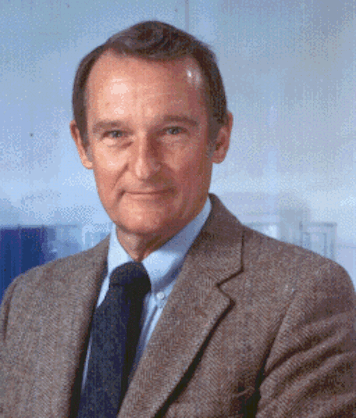
Seymour Cray (1925 -. 1996)
ERA 1101 and 1103V UNIVAC 1951, he began working in the Engineering Research Associates (ERA), which specializes in the creation of cryptographic equipment for the US Naval Forces. Later in 1952 it acquires the Remington Rand and attaches to the division UNIVAC Division.
Company ERA in 1947 signed a contract «Task 13" with the US Navy, according to which they are creating the first electronic computer program stored in memory for entitled «Atlas». And in late 1950, he started in the US National Security Agency.
But, despite the fact that the electronic computer was classified in December 1951 ERA leadership seeking permission to launch its modification and sale. It goes under the name ERA 1101 (ie "13" in binary code) and Seymour Cray, participating in the work on the new machine, in fact, creates his first experimental computer.
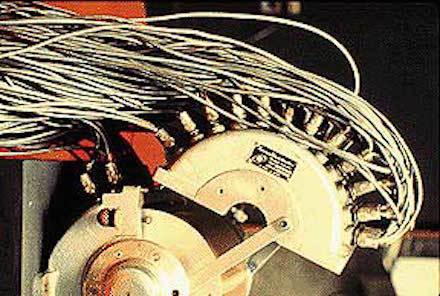
fragment magnetic drum ERA 1101
True car is not in demand, because it is not working with punch cards, and it is not issued instructions for operation and programming. The company wanted to sell computer time for all interested in that of 1953-1954. they collect ERA in 1101 for his office. But the plan did not work and at the end of 1954 passed the car to operate the Technical Institute of Georgia.
The latest model was working on Seymour Cray in the Sperry-Rand, before his move to the CDC, was ERA / UNIVAC 1103.

The car used in memory on 36-electrostatic pipes Williams in diameter, 5 inches each. They could store 1024 bits of data. RAM was based on a magnetic drum capacity of 16,384 words. Electrostatic memory, and the memory of the drum directly addressed: addresses from 0 to 01777 (octal) were given access to the electrostatic memory and addresses from 040 000 to 077 777 (octal) - the drum. Fixed point number is expressed as: 1 bit is allocated for the sign and 35 bits - a value, where negative numbers representing the reverse code. And in floating point numbers was allocated 1 bit for the sign, 8 bits - on the order and 27 bits - mantissa. Instructions consisted of a 6-bit operation code and two 15-bit values of addresses.
Engineering Research Associates asked the Armed Forces Security Agency be allowed to use Atlas II computer for commercial purposes. They get such permission is subject to the removal of a certain number of specific instructions. And the new car in early 1953, entering the market, called UNIVAC 1103, competing with IBM 701. The first UNIVAC computer in 1103 acquired the US Air Force to use in ballistic missile program at Eglin base in Florida. And after the presentation of the computer, in the same 1953, in Los Angeles on a computer conference on the company receives orders from his Convair, Boeing, Lockheed and army polygon White Sands Missile Range.
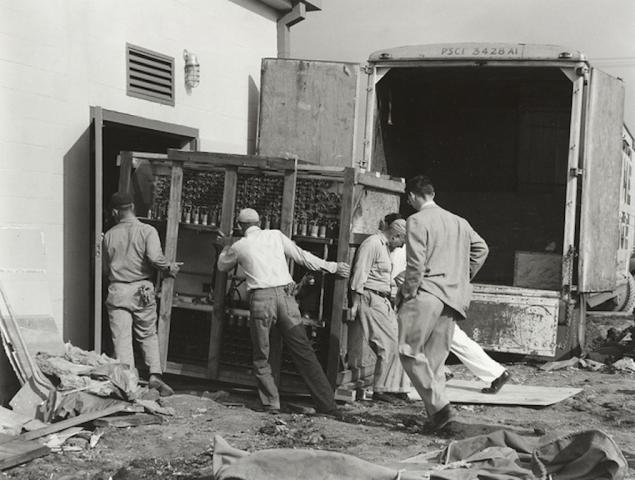
Installation UNIVAC, 1953
Sperry Rand Company saw their future in new orders and an increase in sales of computers, rather than research projects. Therefore, in 1957 they cut the computer unit and the number of developers out, establishing the company CDC (Control Data Corporation).
Cray, a leading engineer of the state project Naval Tactical Data System, completes it and putting their $ 5,000 to the authorized capital of the company, joins the CDC.
CDC 1604Pridya in Control Data Corporation, Seymour Cray immediately plunged into work. The first development of the company, under the direction of Kray, to become a high-speed model CDC 1604 with a frequency of 0, 2 MHz (cycle time of 5 microseconds). Based on studies conducted in the Sperry-Rand project navigation system for intercontinental ballistic missiles and on experiments with «Little Character», Cray built the first full-fledged computer CDC 1604 who worked for germanium transistors instead of vacuum electronic devices. In 1960, this was considered the fastest computer in the world.
These computers were sold in the Naval Postgraduate School, Lawrence Livermore National Laboratory, University of Illinois, the Northrop and Lockheed, the National Bureau of Standards, and even the Government of Israel.

CDC-1604 console
Next development took Kray in just 3 days. 12-bit version of the CDC 1604 was named CDC 160A. It was the first in the world mini computer the size of a office desk. It was used as the input-output data in a console or CDC 1604 used as a remote terminal. In the US, the cost was 110 000 dollars.
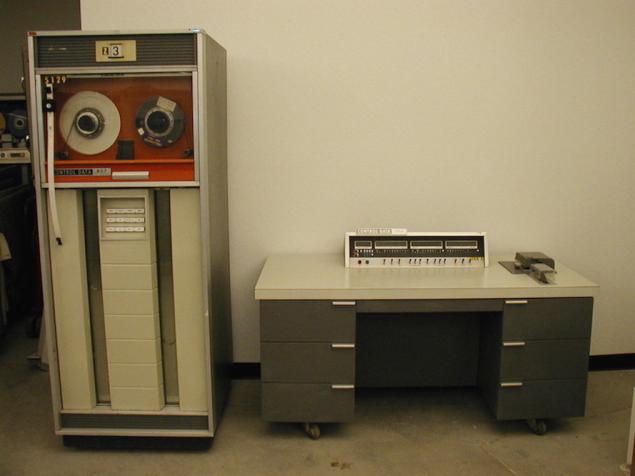
CDC 160A
The Soviet Union was one of the older models arrives in 1968. CDC 1604. It put in Dubna, the Joint Institute for Nuclear Research. There's also a CDC 1604 compiler writes "Fortran-Dubna", software-compatible with the Soviet computer BESM-6. In the future, the CDC 160A Cray will be used as a peripheral processor in a supercomputer CDC 6600.
Comparison Chart CDC-1604 and BESM-6
The \ Machine CDC-1604 BESM-6 The beginning of serial production 1960 1968 Element base of the transistor Transistors Type of addressing Unicast Unicast bit word 48 bit 48 bit long commands 24-bit 24-bit bit adder 48-bit 48-bit bit address 15-bit 15 bit general purpose register 1 (1) 1 (1) index register June 15 RAM Capacity (original) 32,768 words 32,768 words CDC 6600V company Control Data Corporation Seymour Kray was a lot of stress, including administrative and representation that It takes a lot of time and energy. His authority is definitely growing up, but he just wanted to work on new computers, and all of their time and effort to invest only in that direction.
To Cray still remained at the company, in 1962, William Norris, not far from the house Kray, builds his laboratory. The laboratory employs about 40 people, including 4 of the programmer, and 14 engineers. August 22, 1962 Firm Control Data Corporation announces a new model: the CDC 6600, the most powerful computer at the time and has a leading position in the market, pushing IBM to second place
.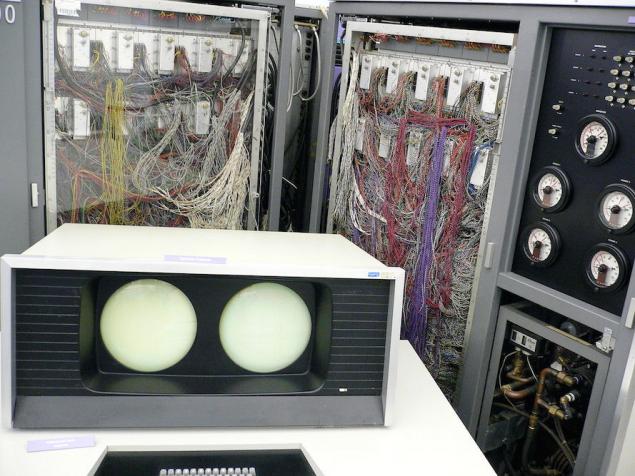
Management Console and modular rack
The latest model of the new IBM lost Kray car on its capacity three times. August 22, 1963 in Chippewa Labs computer CDC 6600 was presented to a narrow circle of journalists.
CDC 6600 computer receives the title of "supercomputer". CDC in 6600 first uses multiple, independent functional units. He has developed software, RAM was divided into 32 banks of 4096 60-bit words, the memory cycle of 1 ms, 10 independent functional units, silicon transistors. Theoretically, he could spend more than 3 million. operations per second (although with the best compiler programmers could be achieved only 0, 5 million.) for the first time had a cooling system using a refrigerant, developed by Dean Roush. Just in Kreyu helped Jim Thornton, who was involved in the CPU. Logic and arithmetic operations are performed the main processor and the peripheral processor 10 reads data from the input device and the results were taken to transfer them to the output device. Thanks to what has been unloaded, the CPU and set his teams performed very quickly.
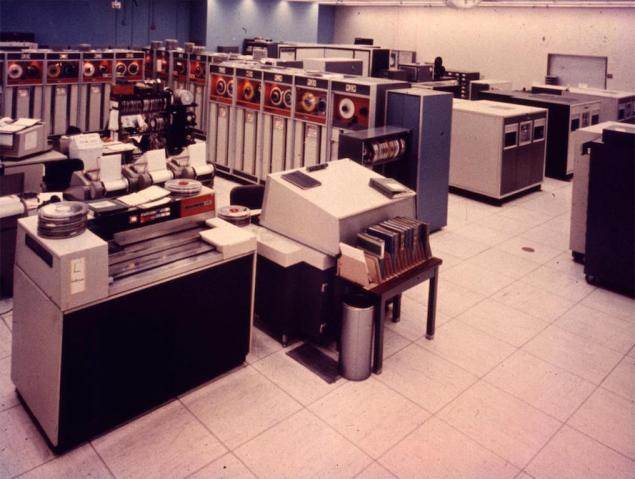
Cray said:
Anyone can create a faster processor. But the highlight is to make the whole system work bystroKompyutery CDC 6600 CDC gathered at the factory in the suburb of St. Paul - Arden Hills. But at the request of Kray, the first five cars collected members of his laboratory, and from Arden Hills factory workers watched the assembly and adopted the experience.
The price of this computer was little more than 7 million. Dollars, while the IBM Stretch computer worth 13 mln. Dollars. The first computer was sold to the Atomic Energy Commission and the Weather Bureau, and by 1967 already 63 machines CDC 6600 was bought by the elite customers.
In the future, based on CDC 6600, it produced a series of computers, the cheaper the price, but far inferior in speed. Computers have been released under the title "Series 6000»: CDC 6400 (April 1966), the CDC 6500 (October 1967), the CDC 6700 (October 1969). As a sequel, still I had to be released on the computer CDC 6800, but Seymour Cray would not just improve the model and decided to create a new computer based on it - CDC 7600, which was the next step in the history of the development of supercomputers
CDC 7600V 1969. he published the next computer Kray CDC 7600. Its clock frequency is 37 MHz. The CDC 7600 for the first time using a combination of parallel and pipeline processing. And to improve the performance of the conveyor, each of its "stages" was presented in the form of separate electronic block containing several printed circuit boards with components arranged one above the other. This made it possible to make the system compact, but damage to any of the boards the entire unit is out of order.

CDC 7600 series №1
CDC 7600 was 4 times faster than the CDC 6600 and cost $ 7.5 million.. But despite these differences, they computers, thanks to the Fortran compiler, are compatible. CDC 7600 100 pieces were purchased at the price of 6 to 10 million, depending on the computer configuration.
CDC 8600Sleduyuschaya model CDC 8600 represented the union of four CDC 7600 computers in one common system. They worked at a frequency of 125 MHz and had a share of memory of 2 MB. Each processor of the new system worked in 2, 5 times faster than the CDC 7600, which increased the productivity of nearly 10 times. But at the same time the reliability of the whole system was quite low and the CDC 8600 the market did not come out.
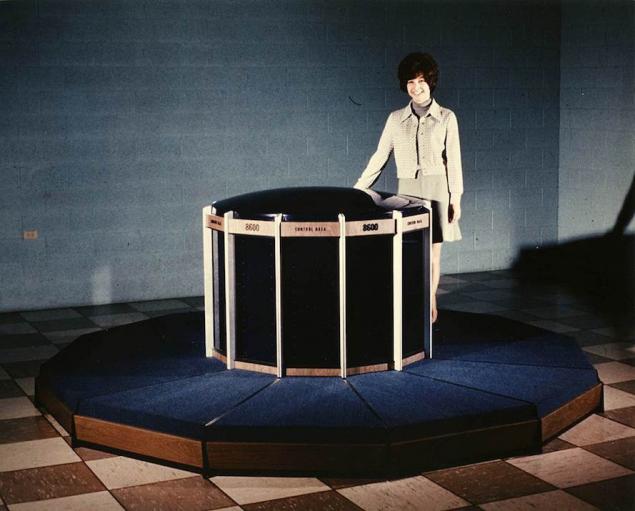
Layout CDC 8600, probably made for promotional purposes
Cray understands that need a new car and turns to William Norris, executive director of Control Data Corporation, a request for support for the new project. However, he refuses to Norris as firm concentrating all their efforts on the development of STAR-100 (CDC engineer developer, Jim Thornton). Then, in 1972, a team of engineers from Cray, go to Control Data Corporation and organizes his own firm - Cray Research.
Cray-1Vzyav into account all the advantages and disadvantages of their previous computers and the latest development of STAR-100 Control Data Corporation, Cray is taken for the creation of a new machine.
The foundation is laid parallel processing computer information. Instead of transistors in the new Cray machine uses integrated circuits and vector processor; cycle time increases to 12 5 ns (80 MHz); The microprocessor used conveyor 12 functional modules, divided into four groups - address, scalar, vector, and group processing of floating point numbers (the order - 15, mantissa - 49). System performance was 180 million operations per second floating point.
It creates a small amount of memory ( "vector registers"), which operate at high speed and are close to the processor, which makes it possible to carry out pretty fast scalar and vector calculus. RAM (64 bits) is composed of 16 independent blocks of 64 KB words each. Its volume covers 1048576 machine words (8 MB). Register memory is divided into five groups of registers in the amount - 152 pcs. More in the system has a special buffer memory for intermediate storage of commands executable program consists of four sections with 16 words in each machine. The CPU used a new principle of memory "register-to-register". It receives data from the registers and records them to the same.
Since the Cray-1 was basically another computer, then Kreyu was no need to combine it with the previous machines. Cray-1 was a vector-pipelined computer system. The computer had a polyhedral shape, which reduces the length of the wires and increase the density of arrangement of the system components. The central processing unit on all sides was surrounded by chips of RAM, which would require the same time to have access to each of them. It consisted of 500 printed circuit boards, on which there were 144,000 chips cooled Freon. For a more efficient cooling of the CPU was in the form "tower" with twelve pillars set in a semicircle of 270 degrees in length and resembling the letter "C" (from Cray), and the cooling system itself is at the bottom under the towers.
Due to the ultra-dense integration of components inside, the Cray-1, a large amount of heat. This means that required a powerful cooling system. To this end, developing a special unit where liquid freon is used for cooling.
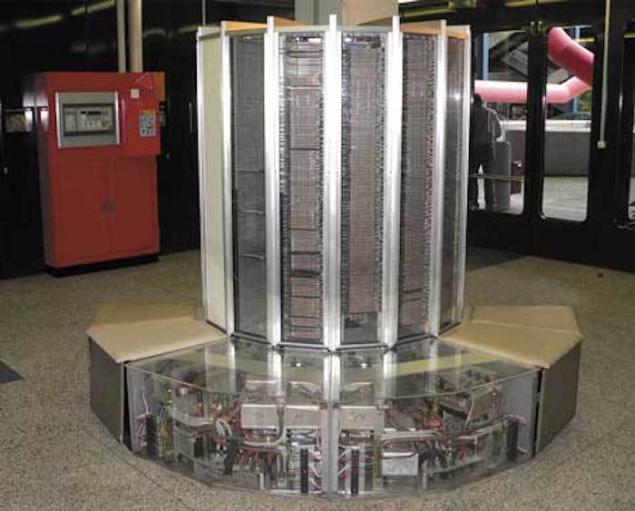
cooling system Cray-1
Between modules installed copper Teflon coated plates that collect heat and take him to the edge of the rack. The plates are attached to the main "cooling line", consisting of 12 panels of aluminum "shells" inside which steel tubes are. Held thereon freon liquid, the cooling system at the bottom, in which the refrigeration unit and stored. "Backbone" temperature is 12 degrees Celsius, and can be increased up to 54 degrees in the central parts of the modules. In general, the temperature was below the computer room and it made it possible to install it in a room without even having air conditioning.

housing bottom of the supercomputer was covered with a layer of soft filler, and outwardly resembled the seat from which he jokingly called "the most expensive in the world armchair»
All electronics Cray-1 was hidden in a polyhedron with sixteen faces a diameter of 150 cm and a height of 195 cm System weight up to 6 tons, energy consumption was -. 115 kW. A total power consumption (with the storage system and the cooling unit) was 250 kW. Therefore, for the power supply meet the special device Power Distribution Unit, two meters high, providing their own personal thanks to diesel generators.
In 1974, the first tests already Cray-1 computer showed his average performance of 80 MFLOPS. In some operations, the speed was increased to 150 MFLOPS, and the maximum performance was 250 MFLOPS.
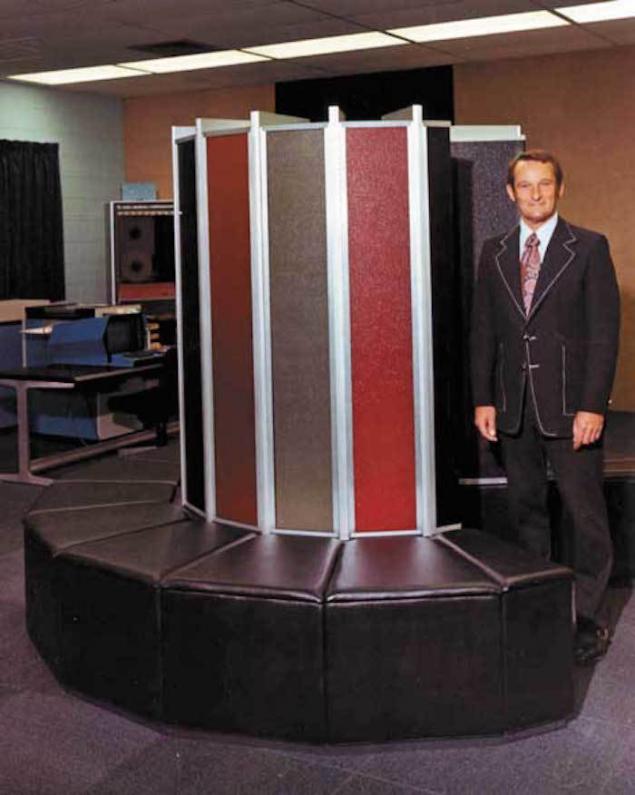
Seymour Cray in 1974, with his brainchild - Cray 1 computer
In 1975, Cray Research introduces the public to the computer Cray-1, and in March 1976 released their first sample of the computer (serial number 001), which is set in the Los Alamos Nuclear Laboratory of the United States for six months and get the excellent reviews.
It serves as a good advertisement for the sale of the following computer; second car sold for 8, 86 million. dollars to the National Center for Atmospheric Research. And more than a hundred customers were interested in such a purchase.
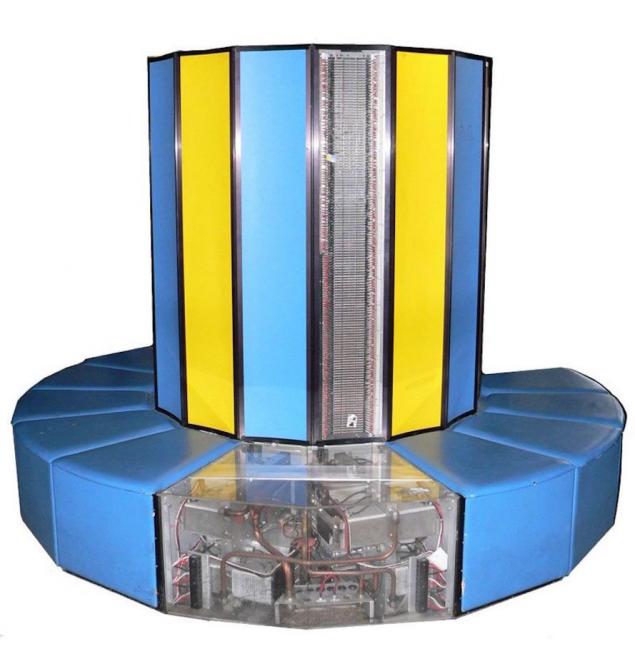
When buying a Cray-1 (and later other computers), each customer can choose the color of the faces on the discretion
But, along with the purchase, Cray-1 can be rented for 210,500 dollars per month (hour on the Cray-1 was $ 7,500). Sales Cray-1 computers Cray Research has led to the financial growth of the company and the defeat of their rivals.
2Okolo Cray-Cray in 1976 he began to develop a new computer Cray-2. It was originally planned as a computer with four processors and vector time to time with 4 ns, but by 1978, he decides to change the technology and replace 4 vector processor scalar processor 64. But technology massively parallel computing have been poorly studied. For a computer with a massively parallel computations needed special parallelizing compiler. And he began to work on it Steve Nelson. A few months later, Cray went to Lawrence Livermore National Laboratory, to their programmers to design their new machines. But at that time the computer 64 scalar processors was too progressive for him and were not ready. After that Seymour Cray returns to the original design.
To increase the clock frequency, reduces the distance between the Cray computer elements. Wire length is shortened to 16 inches. Packaging becomes whiter dense, and the distance between the panels does not allow to place a plate heat sinks, which in turn makes it difficult to heat dissipation. Therefore, we needed a different cooling system is not similar to the Cray-1.
Cray-2 project became like a failed project CDC 8600. Then Cray offers a laboratory for the creation of integrated circuits that would accommodate a large amount of logic in the small size of the machine. This laboratory appears Boldyrev (Colorado).
At the end of 1980 over the company Cray Cray Research John Rollvalenu and devotes more time to work on the Cray-2. Что бы более эффективно отводить тепло, Крэй в 1981 году, предлагает поместить всю машину в инертную жидкость Fluorinert компании 3М (Minnesota Mining and Manufacturing Company), которая использовалась при операциях на сердце. Это вещество должно было отводить тепло посредством циркуляции как вокруг машины, так и внутри нее.

Внутри Cray-2
В связи с этим новшеством необходимость в Болдырской лаборатории и ее работах над СБИС, исчезает и в 1982 году она закрывается. Весной 1985 года Крэй представляет новый самый быстрый в мире компьютер Cray-2. Эту пальму первенства он держит до 1990 года (в 1990 году, компания ETA выпустит новый суперкомпьютер ETA-10G). Первый экземпляр Cray-2 поставили Ливерморской национальной лаборатории.
Система Cray-2 имела 2 или 4 векторных процессора (в зависимости от конфигурации), ее элементная база состояла из интегральной схемы с 16 логическими вентилями и эмиттерно-связанной логики на биполярных транзисторах. Время такта составляло 4, 1 нс, объем памяти — 256 млн. 64-разрядных слов. Была поставлена операционная система UNIX-подобная Unicos или Cray Operating System. Программное обеспечение имело два компилятора языка Fortran: CFT2 и CFT77 с автоматической векторизацией кода, компилятор языка C, макро-ассемблер CAL, утилиты и библиотеки для работы с устройствами ввода-вывода и организациями исполнения задач. У Cray-2 было жидкостное охлаждение с полным погружением, а энергопотребление составляло 195 кВт. Его высота составляла 114, 3 см, диаметр — 134, 6 см. Компьютер состоял из 14 вертикальных колонн-стоек, собранных в дугу длиной 300 градусов.
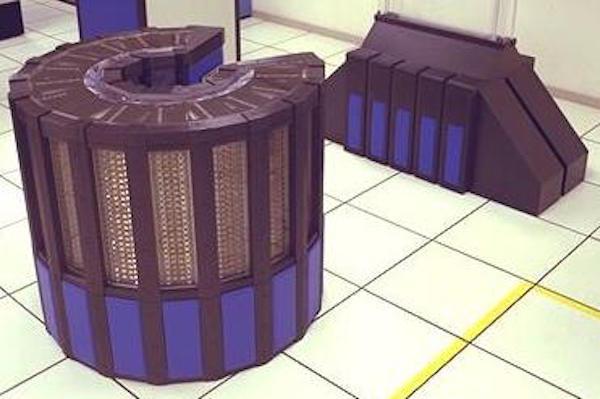
Cray-2 в NASA
2-й экземпляр Cray-2 в сентябре 1985 года был установлен в Исследовательском центре Эймса. Вначале Cray-2 разрабатывался для Министерства обороны и Министерства энергетики США, для исследований в области ядерных вооружений и океанографии, но он нашел свое применение и в мирных направлениях: в NASA, в университетах и корпорациях по всему миру.
Применение Cray-2 в NASA
Стоимость Cray-2 в 1985 году составляла 17.6 миллиона долларов. В 1990 году специально для Ливерморской национальной лаборатории в единственном экземпляре строится 8-процессорный Cray-2 стоимостью 19 миллионов долларов. К этому времени Сеймур Крэй отделяется от Cray Research и создает новую компанию Cray Computer Corp, чтобы работать над новым компьютером Cray-3 и поддерживать Cray-2.
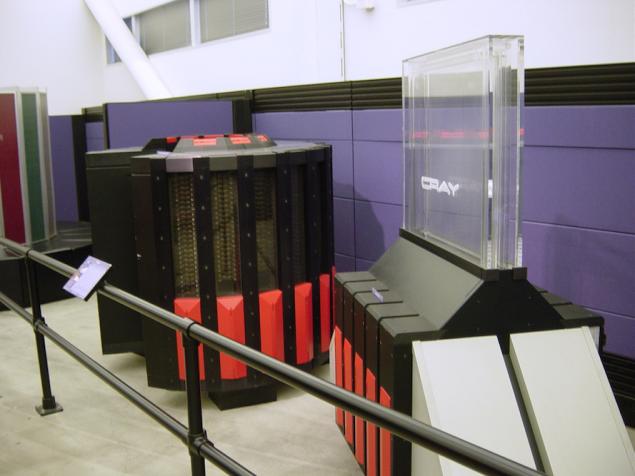
Единственный в мире 8-процессорный Cray-2
Cray-3, Cray-4, Cray-5, Cray-6Еще с 1988 года Крэй начинает работу над новой машиной Cray-3. Что бы полностью посвятить себя этой работе он в мае 1989 года уходит из компании Cray Research и создает новую Cray Computer Corporation. Со своей стороны Cray Research вкладывает в новую компанию Крэя 100 миллионов долларов наличными и 50 миллионов имуществом.
Чтобы достичь больших скоростей в модели Cray-3, Крэй берет арсенид галлия, который используется в быстродействующих схемах для спутников, как основу для своих микросхем. Это дало возможность создать микросхемы, работающие в шесть раз быстрее кремниевых микросхем. Но учитывая, что арсенид галлия очень хрупкий, то производительность таких изделий была очень низкой. Для испытания собранных модулей не было тестового оборудования, и компания Cray Computer Corporation вынуждена была приобретать дорогое оборудование по специальному заказу. А это в свою очередь влияло на дальнейшую стоимости компьютера (свыше 30 миллионов долларов).
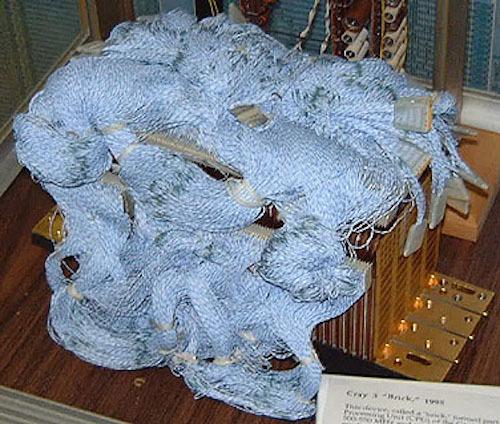
Процессорный модуль Cray 3
Cray 3 поддерживал установку до 16 процессоров. Его производительность должна была стать самой высокой в мире. Но он, к сожалению, работает нестабильно. И Национальный центр атмосферных исследований, будучи главным заказчиком на Cray 3, перестает выделять деньги на доработки.
В августа 1990 года Cray Computer Corporation все же заключают договор с Ливерморской национальной лабораторией на продажу и поставку первого компьютера до июня 1992 г. Вплоть до июня 1991 года сдачи модулей идут по плану, но к концу 1991 года становиться очевидно, что в назначенный срок сдать блок вычислений с плавающей запятой не возможно и контракт разрывается.
В итоге для компании наступает тяжёлое время. С окончанием холодной войны и сокращением финансовых расходов на оборону, число компаний способных купить компьютер за такую цену значительно уменьшилось. И компания принимает решение остановить разработку 16-процессорного Cray-3 и найти покупателя на 8-процессорный компьютер. В итоге единственный в мире прототип Cray 3 находится в NCAR (Национальном центре атмосферных исследований).
Спустя некоторое время компания Cray Computer Corporation обанкротилась, но Крэй не останавливается и продолжает воплощать свои новые идеи. В 1996 году появляется новая компания SRC Computers и продолжается работа над Сгау-4.
Планировалось, что у Сгау-4 будет 64 процессора, длительность такта — 1 нс (тактовая частота 1 ГГц) и максимальная производительность 128 GFLOPS. Работа над Сгау-4 продвигалась по плану, в перспективе намечались Сгау-5, и Сгау-6. Как всегда в планах Крэя оставалось создание самого быстрого компьютера в мире. Но 22 сентября 1996 года Сеймур Крей попадает в автомобильную аварию. Он получает очень тяжелые травмы шеи и головы. И 5 октября 1996 года Сеймур Роджер Крэй, в возрасте 71 год, умирает от полученных травм.

В честь Крэя в 1997 году была учреждена награда «Seymour Cray Computer Engineering Award », которая вручается ежегодно IEEE Computer Society. За период своей деятельности Сеймур Крэй создал уникальную линию компьютеров высшего класса сыгравших ключевую роль в истории развития суперкомпьютеров.
Источник: geektimes.ru/company/ua-hosting/blog/278760/

Seymour Cray (1925 -. 1996)
ERA 1101 and 1103V UNIVAC 1951, he began working in the Engineering Research Associates (ERA), which specializes in the creation of cryptographic equipment for the US Naval Forces. Later in 1952 it acquires the Remington Rand and attaches to the division UNIVAC Division.
Company ERA in 1947 signed a contract «Task 13" with the US Navy, according to which they are creating the first electronic computer program stored in memory for entitled «Atlas». And in late 1950, he started in the US National Security Agency.
But, despite the fact that the electronic computer was classified in December 1951 ERA leadership seeking permission to launch its modification and sale. It goes under the name ERA 1101 (ie "13" in binary code) and Seymour Cray, participating in the work on the new machine, in fact, creates his first experimental computer.

fragment magnetic drum ERA 1101
True car is not in demand, because it is not working with punch cards, and it is not issued instructions for operation and programming. The company wanted to sell computer time for all interested in that of 1953-1954. they collect ERA in 1101 for his office. But the plan did not work and at the end of 1954 passed the car to operate the Technical Institute of Georgia.
The latest model was working on Seymour Cray in the Sperry-Rand, before his move to the CDC, was ERA / UNIVAC 1103.

The car used in memory on 36-electrostatic pipes Williams in diameter, 5 inches each. They could store 1024 bits of data. RAM was based on a magnetic drum capacity of 16,384 words. Electrostatic memory, and the memory of the drum directly addressed: addresses from 0 to 01777 (octal) were given access to the electrostatic memory and addresses from 040 000 to 077 777 (octal) - the drum. Fixed point number is expressed as: 1 bit is allocated for the sign and 35 bits - a value, where negative numbers representing the reverse code. And in floating point numbers was allocated 1 bit for the sign, 8 bits - on the order and 27 bits - mantissa. Instructions consisted of a 6-bit operation code and two 15-bit values of addresses.
Engineering Research Associates asked the Armed Forces Security Agency be allowed to use Atlas II computer for commercial purposes. They get such permission is subject to the removal of a certain number of specific instructions. And the new car in early 1953, entering the market, called UNIVAC 1103, competing with IBM 701. The first UNIVAC computer in 1103 acquired the US Air Force to use in ballistic missile program at Eglin base in Florida. And after the presentation of the computer, in the same 1953, in Los Angeles on a computer conference on the company receives orders from his Convair, Boeing, Lockheed and army polygon White Sands Missile Range.

Installation UNIVAC, 1953
Sperry Rand Company saw their future in new orders and an increase in sales of computers, rather than research projects. Therefore, in 1957 they cut the computer unit and the number of developers out, establishing the company CDC (Control Data Corporation).
Cray, a leading engineer of the state project Naval Tactical Data System, completes it and putting their $ 5,000 to the authorized capital of the company, joins the CDC.
CDC 1604Pridya in Control Data Corporation, Seymour Cray immediately plunged into work. The first development of the company, under the direction of Kray, to become a high-speed model CDC 1604 with a frequency of 0, 2 MHz (cycle time of 5 microseconds). Based on studies conducted in the Sperry-Rand project navigation system for intercontinental ballistic missiles and on experiments with «Little Character», Cray built the first full-fledged computer CDC 1604 who worked for germanium transistors instead of vacuum electronic devices. In 1960, this was considered the fastest computer in the world.
These computers were sold in the Naval Postgraduate School, Lawrence Livermore National Laboratory, University of Illinois, the Northrop and Lockheed, the National Bureau of Standards, and even the Government of Israel.

CDC-1604 console
Next development took Kray in just 3 days. 12-bit version of the CDC 1604 was named CDC 160A. It was the first in the world mini computer the size of a office desk. It was used as the input-output data in a console or CDC 1604 used as a remote terminal. In the US, the cost was 110 000 dollars.

CDC 160A
The Soviet Union was one of the older models arrives in 1968. CDC 1604. It put in Dubna, the Joint Institute for Nuclear Research. There's also a CDC 1604 compiler writes "Fortran-Dubna", software-compatible with the Soviet computer BESM-6. In the future, the CDC 160A Cray will be used as a peripheral processor in a supercomputer CDC 6600.
Comparison Chart CDC-1604 and BESM-6
The \ Machine CDC-1604 BESM-6 The beginning of serial production 1960 1968 Element base of the transistor Transistors Type of addressing Unicast Unicast bit word 48 bit 48 bit long commands 24-bit 24-bit bit adder 48-bit 48-bit bit address 15-bit 15 bit general purpose register 1 (1) 1 (1) index register June 15 RAM Capacity (original) 32,768 words 32,768 words CDC 6600V company Control Data Corporation Seymour Kray was a lot of stress, including administrative and representation that It takes a lot of time and energy. His authority is definitely growing up, but he just wanted to work on new computers, and all of their time and effort to invest only in that direction.
To Cray still remained at the company, in 1962, William Norris, not far from the house Kray, builds his laboratory. The laboratory employs about 40 people, including 4 of the programmer, and 14 engineers. August 22, 1962 Firm Control Data Corporation announces a new model: the CDC 6600, the most powerful computer at the time and has a leading position in the market, pushing IBM to second place
.

Management Console and modular rack
The latest model of the new IBM lost Kray car on its capacity three times. August 22, 1963 in Chippewa Labs computer CDC 6600 was presented to a narrow circle of journalists.
CDC 6600 computer receives the title of "supercomputer". CDC in 6600 first uses multiple, independent functional units. He has developed software, RAM was divided into 32 banks of 4096 60-bit words, the memory cycle of 1 ms, 10 independent functional units, silicon transistors. Theoretically, he could spend more than 3 million. operations per second (although with the best compiler programmers could be achieved only 0, 5 million.) for the first time had a cooling system using a refrigerant, developed by Dean Roush. Just in Kreyu helped Jim Thornton, who was involved in the CPU. Logic and arithmetic operations are performed the main processor and the peripheral processor 10 reads data from the input device and the results were taken to transfer them to the output device. Thanks to what has been unloaded, the CPU and set his teams performed very quickly.

Cray said:
Anyone can create a faster processor. But the highlight is to make the whole system work bystroKompyutery CDC 6600 CDC gathered at the factory in the suburb of St. Paul - Arden Hills. But at the request of Kray, the first five cars collected members of his laboratory, and from Arden Hills factory workers watched the assembly and adopted the experience.
The price of this computer was little more than 7 million. Dollars, while the IBM Stretch computer worth 13 mln. Dollars. The first computer was sold to the Atomic Energy Commission and the Weather Bureau, and by 1967 already 63 machines CDC 6600 was bought by the elite customers.
In the future, based on CDC 6600, it produced a series of computers, the cheaper the price, but far inferior in speed. Computers have been released under the title "Series 6000»: CDC 6400 (April 1966), the CDC 6500 (October 1967), the CDC 6700 (October 1969). As a sequel, still I had to be released on the computer CDC 6800, but Seymour Cray would not just improve the model and decided to create a new computer based on it - CDC 7600, which was the next step in the history of the development of supercomputers
CDC 7600V 1969. he published the next computer Kray CDC 7600. Its clock frequency is 37 MHz. The CDC 7600 for the first time using a combination of parallel and pipeline processing. And to improve the performance of the conveyor, each of its "stages" was presented in the form of separate electronic block containing several printed circuit boards with components arranged one above the other. This made it possible to make the system compact, but damage to any of the boards the entire unit is out of order.

CDC 7600 series №1
CDC 7600 was 4 times faster than the CDC 6600 and cost $ 7.5 million.. But despite these differences, they computers, thanks to the Fortran compiler, are compatible. CDC 7600 100 pieces were purchased at the price of 6 to 10 million, depending on the computer configuration.
CDC 8600Sleduyuschaya model CDC 8600 represented the union of four CDC 7600 computers in one common system. They worked at a frequency of 125 MHz and had a share of memory of 2 MB. Each processor of the new system worked in 2, 5 times faster than the CDC 7600, which increased the productivity of nearly 10 times. But at the same time the reliability of the whole system was quite low and the CDC 8600 the market did not come out.

Layout CDC 8600, probably made for promotional purposes
Cray understands that need a new car and turns to William Norris, executive director of Control Data Corporation, a request for support for the new project. However, he refuses to Norris as firm concentrating all their efforts on the development of STAR-100 (CDC engineer developer, Jim Thornton). Then, in 1972, a team of engineers from Cray, go to Control Data Corporation and organizes his own firm - Cray Research.
Cray-1Vzyav into account all the advantages and disadvantages of their previous computers and the latest development of STAR-100 Control Data Corporation, Cray is taken for the creation of a new machine.
The foundation is laid parallel processing computer information. Instead of transistors in the new Cray machine uses integrated circuits and vector processor; cycle time increases to 12 5 ns (80 MHz); The microprocessor used conveyor 12 functional modules, divided into four groups - address, scalar, vector, and group processing of floating point numbers (the order - 15, mantissa - 49). System performance was 180 million operations per second floating point.
It creates a small amount of memory ( "vector registers"), which operate at high speed and are close to the processor, which makes it possible to carry out pretty fast scalar and vector calculus. RAM (64 bits) is composed of 16 independent blocks of 64 KB words each. Its volume covers 1048576 machine words (8 MB). Register memory is divided into five groups of registers in the amount - 152 pcs. More in the system has a special buffer memory for intermediate storage of commands executable program consists of four sections with 16 words in each machine. The CPU used a new principle of memory "register-to-register". It receives data from the registers and records them to the same.
Since the Cray-1 was basically another computer, then Kreyu was no need to combine it with the previous machines. Cray-1 was a vector-pipelined computer system. The computer had a polyhedral shape, which reduces the length of the wires and increase the density of arrangement of the system components. The central processing unit on all sides was surrounded by chips of RAM, which would require the same time to have access to each of them. It consisted of 500 printed circuit boards, on which there were 144,000 chips cooled Freon. For a more efficient cooling of the CPU was in the form "tower" with twelve pillars set in a semicircle of 270 degrees in length and resembling the letter "C" (from Cray), and the cooling system itself is at the bottom under the towers.
Due to the ultra-dense integration of components inside, the Cray-1, a large amount of heat. This means that required a powerful cooling system. To this end, developing a special unit where liquid freon is used for cooling.

cooling system Cray-1
Between modules installed copper Teflon coated plates that collect heat and take him to the edge of the rack. The plates are attached to the main "cooling line", consisting of 12 panels of aluminum "shells" inside which steel tubes are. Held thereon freon liquid, the cooling system at the bottom, in which the refrigeration unit and stored. "Backbone" temperature is 12 degrees Celsius, and can be increased up to 54 degrees in the central parts of the modules. In general, the temperature was below the computer room and it made it possible to install it in a room without even having air conditioning.

housing bottom of the supercomputer was covered with a layer of soft filler, and outwardly resembled the seat from which he jokingly called "the most expensive in the world armchair»
All electronics Cray-1 was hidden in a polyhedron with sixteen faces a diameter of 150 cm and a height of 195 cm System weight up to 6 tons, energy consumption was -. 115 kW. A total power consumption (with the storage system and the cooling unit) was 250 kW. Therefore, for the power supply meet the special device Power Distribution Unit, two meters high, providing their own personal thanks to diesel generators.
In 1974, the first tests already Cray-1 computer showed his average performance of 80 MFLOPS. In some operations, the speed was increased to 150 MFLOPS, and the maximum performance was 250 MFLOPS.

Seymour Cray in 1974, with his brainchild - Cray 1 computer
In 1975, Cray Research introduces the public to the computer Cray-1, and in March 1976 released their first sample of the computer (serial number 001), which is set in the Los Alamos Nuclear Laboratory of the United States for six months and get the excellent reviews.
It serves as a good advertisement for the sale of the following computer; second car sold for 8, 86 million. dollars to the National Center for Atmospheric Research. And more than a hundred customers were interested in such a purchase.

When buying a Cray-1 (and later other computers), each customer can choose the color of the faces on the discretion
But, along with the purchase, Cray-1 can be rented for 210,500 dollars per month (hour on the Cray-1 was $ 7,500). Sales Cray-1 computers Cray Research has led to the financial growth of the company and the defeat of their rivals.
2Okolo Cray-Cray in 1976 he began to develop a new computer Cray-2. It was originally planned as a computer with four processors and vector time to time with 4 ns, but by 1978, he decides to change the technology and replace 4 vector processor scalar processor 64. But technology massively parallel computing have been poorly studied. For a computer with a massively parallel computations needed special parallelizing compiler. And he began to work on it Steve Nelson. A few months later, Cray went to Lawrence Livermore National Laboratory, to their programmers to design their new machines. But at that time the computer 64 scalar processors was too progressive for him and were not ready. After that Seymour Cray returns to the original design.
To increase the clock frequency, reduces the distance between the Cray computer elements. Wire length is shortened to 16 inches. Packaging becomes whiter dense, and the distance between the panels does not allow to place a plate heat sinks, which in turn makes it difficult to heat dissipation. Therefore, we needed a different cooling system is not similar to the Cray-1.
Cray-2 project became like a failed project CDC 8600. Then Cray offers a laboratory for the creation of integrated circuits that would accommodate a large amount of logic in the small size of the machine. This laboratory appears Boldyrev (Colorado).
At the end of 1980 over the company Cray Cray Research John Rollvalenu and devotes more time to work on the Cray-2. Что бы более эффективно отводить тепло, Крэй в 1981 году, предлагает поместить всю машину в инертную жидкость Fluorinert компании 3М (Minnesota Mining and Manufacturing Company), которая использовалась при операциях на сердце. Это вещество должно было отводить тепло посредством циркуляции как вокруг машины, так и внутри нее.

Внутри Cray-2
В связи с этим новшеством необходимость в Болдырской лаборатории и ее работах над СБИС, исчезает и в 1982 году она закрывается. Весной 1985 года Крэй представляет новый самый быстрый в мире компьютер Cray-2. Эту пальму первенства он держит до 1990 года (в 1990 году, компания ETA выпустит новый суперкомпьютер ETA-10G). Первый экземпляр Cray-2 поставили Ливерморской национальной лаборатории.
Система Cray-2 имела 2 или 4 векторных процессора (в зависимости от конфигурации), ее элементная база состояла из интегральной схемы с 16 логическими вентилями и эмиттерно-связанной логики на биполярных транзисторах. Время такта составляло 4, 1 нс, объем памяти — 256 млн. 64-разрядных слов. Была поставлена операционная система UNIX-подобная Unicos или Cray Operating System. Программное обеспечение имело два компилятора языка Fortran: CFT2 и CFT77 с автоматической векторизацией кода, компилятор языка C, макро-ассемблер CAL, утилиты и библиотеки для работы с устройствами ввода-вывода и организациями исполнения задач. У Cray-2 было жидкостное охлаждение с полным погружением, а энергопотребление составляло 195 кВт. Его высота составляла 114, 3 см, диаметр — 134, 6 см. Компьютер состоял из 14 вертикальных колонн-стоек, собранных в дугу длиной 300 градусов.

Cray-2 в NASA
2-й экземпляр Cray-2 в сентябре 1985 года был установлен в Исследовательском центре Эймса. Вначале Cray-2 разрабатывался для Министерства обороны и Министерства энергетики США, для исследований в области ядерных вооружений и океанографии, но он нашел свое применение и в мирных направлениях: в NASA, в университетах и корпорациях по всему миру.
Применение Cray-2 в NASA
Стоимость Cray-2 в 1985 году составляла 17.6 миллиона долларов. В 1990 году специально для Ливерморской национальной лаборатории в единственном экземпляре строится 8-процессорный Cray-2 стоимостью 19 миллионов долларов. К этому времени Сеймур Крэй отделяется от Cray Research и создает новую компанию Cray Computer Corp, чтобы работать над новым компьютером Cray-3 и поддерживать Cray-2.

Единственный в мире 8-процессорный Cray-2
Cray-3, Cray-4, Cray-5, Cray-6Еще с 1988 года Крэй начинает работу над новой машиной Cray-3. Что бы полностью посвятить себя этой работе он в мае 1989 года уходит из компании Cray Research и создает новую Cray Computer Corporation. Со своей стороны Cray Research вкладывает в новую компанию Крэя 100 миллионов долларов наличными и 50 миллионов имуществом.
Чтобы достичь больших скоростей в модели Cray-3, Крэй берет арсенид галлия, который используется в быстродействующих схемах для спутников, как основу для своих микросхем. Это дало возможность создать микросхемы, работающие в шесть раз быстрее кремниевых микросхем. Но учитывая, что арсенид галлия очень хрупкий, то производительность таких изделий была очень низкой. Для испытания собранных модулей не было тестового оборудования, и компания Cray Computer Corporation вынуждена была приобретать дорогое оборудование по специальному заказу. А это в свою очередь влияло на дальнейшую стоимости компьютера (свыше 30 миллионов долларов).

Процессорный модуль Cray 3
Cray 3 поддерживал установку до 16 процессоров. Его производительность должна была стать самой высокой в мире. Но он, к сожалению, работает нестабильно. И Национальный центр атмосферных исследований, будучи главным заказчиком на Cray 3, перестает выделять деньги на доработки.
В августа 1990 года Cray Computer Corporation все же заключают договор с Ливерморской национальной лабораторией на продажу и поставку первого компьютера до июня 1992 г. Вплоть до июня 1991 года сдачи модулей идут по плану, но к концу 1991 года становиться очевидно, что в назначенный срок сдать блок вычислений с плавающей запятой не возможно и контракт разрывается.
В итоге для компании наступает тяжёлое время. С окончанием холодной войны и сокращением финансовых расходов на оборону, число компаний способных купить компьютер за такую цену значительно уменьшилось. И компания принимает решение остановить разработку 16-процессорного Cray-3 и найти покупателя на 8-процессорный компьютер. В итоге единственный в мире прототип Cray 3 находится в NCAR (Национальном центре атмосферных исследований).
Спустя некоторое время компания Cray Computer Corporation обанкротилась, но Крэй не останавливается и продолжает воплощать свои новые идеи. В 1996 году появляется новая компания SRC Computers и продолжается работа над Сгау-4.
Планировалось, что у Сгау-4 будет 64 процессора, длительность такта — 1 нс (тактовая частота 1 ГГц) и максимальная производительность 128 GFLOPS. Работа над Сгау-4 продвигалась по плану, в перспективе намечались Сгау-5, и Сгау-6. Как всегда в планах Крэя оставалось создание самого быстрого компьютера в мире. Но 22 сентября 1996 года Сеймур Крей попадает в автомобильную аварию. Он получает очень тяжелые травмы шеи и головы. И 5 октября 1996 года Сеймур Роджер Крэй, в возрасте 71 год, умирает от полученных травм.

В честь Крэя в 1997 году была учреждена награда «Seymour Cray Computer Engineering Award », которая вручается ежегодно IEEE Computer Society. За период своей деятельности Сеймур Крэй создал уникальную линию компьютеров высшего класса сыгравших ключевую роль в истории развития суперкомпьютеров.
Источник: geektimes.ru/company/ua-hosting/blog/278760/
Tags
See also
Screen Love
History of personal computers in the advertisement. Part 3: The 1990s
Actors-veterans (54 pics + text)
It works with 11 years to get to the university
The Olympic Games in Sochi. Preparation and construction.
The Parable of the opportunities that we often overlook.
The top 20 on the tangled romantic relationships films
Andrei Zorin about the traumas of the past and political manipulation
Components "business model - show business" is very common

















